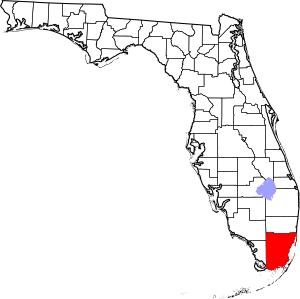After the Omicron surge hit Miami-Dade County in January and the seven-day case positivity rate peaked at a whopping 35 percent, COVID-19 cases began a steady week-by-week decline and by mid-March, the rates were at the lowest they’ve ever been: 2 percent seven-day case positivity. For a while, it seemed the end of the pandemic was finally in sight as restrictions about mandatory facial coverings and social gatherings loosened.
Unfortunately, if there was a light at the end of the tunnel, we can’t see it any more.
Miami-Dade’s seven-day case positivity has slowly risen each week for the past two months. It’s now at 22 percent, according to the county’s latest COVID-19 dashboard released Monday — the highest level since January —and the numbers are expected to continue rising. The U.S. Centers for Disease Control and Prevention (CDC) lists the level of community transition in Miami-Dade as “High.”
Dr. Aileen Marty, a distinguished professor of infectious diseases at Florida International University and a COVID-19 advisor to Miami and Miami-Dade County, tells New Times that South Florida is not only in the midst of its “sixth wave” of COVID-19 but that the rate is likely much higher than the numbers indicate, given the significant number of people who use at-home kits and who aren’t reporting the results to the Florida Department of Health’s and CDC’s official counts.
“We’re not as high as we were during the peak of Omicron but we’re still pretty high, and our case positivity is definitely an undercount,” Marty elaborates. “It’s definitely something that’s growing.”
According to the Florida Department of Health, Miami-Dade has one of the highest rates of first-dose vaccination in the state: 99 percent among residents 5 years old and up. By now, roughly half of all Miami-Dade residents have contracted COVID-19 at least once since March 2020. Though both are promising stats about the region’s infection- and vaccinated-induced immunity, the SARS-CoV-2 virus is constantly mutating, and new, emerging variants neutralize and limit the effectiveness of antibodies over time. Some speculate that herd immunity — i.e., when enough people have developed a resistance to the virus to limit its ability to spread — is now a myth where COVID-19 is concerned.
“It’s a coronavirus, and we have known for decades that immunity doesn’t last,” Marty says.
The Jackson and Baptist Health health systems are reporting a surge in COVID-19 hospitalizations: 122 and 117 patients are hospitalized for COVID-19, respectively. The vast majority — 76 percent — are unvaccinated, Marty says; the remaining 24 percent of patients are vaccinated but “immunocompromised” or have “a significant underlying disease.”
“I spoke to the folks at Jackson and Baptist and they’re seeing a really significant increase,” Marty tells New Times. “It’s less of a public-health threat than it was because the percentage of people who are likely to end up hospitalized has decreased dramatically because of previous infection, vaccination, and boosting.”
For now, Marty recommends individuals perform their own “risk assessment” before going out in public, evaluating the risk of exposure for each outing, and the age, health, and vaccine status of people they might expose if they’re infected. She recommends receiving a booster shot two weeks before attending an event with a high risk of exposure, such as a wedding. (If a person contracts COVID-19, Marty recommends waiting at least 33 days after testing negative to receive a vaccine or booster dose.)
“Now that we’re officially at 22 percent, those are very high odds of being anywhere with strangers indoors who are shedding the virus,” she says.
In the meantime, Marty urges residents to continue “common sense” practices, including gathering outdoors rather than indoors, washing your hands, and wearing facial coverings when indoors. Not only is there an uptick in COVID-19 cases, Marty notes, but other viruses are also quickly spreading after years of social distancing have kept them at bay.
“We’re seeing skyrocketing flu amounts,” the public-health expert says. “We’ve never seen this much influenza this time of the year.”


